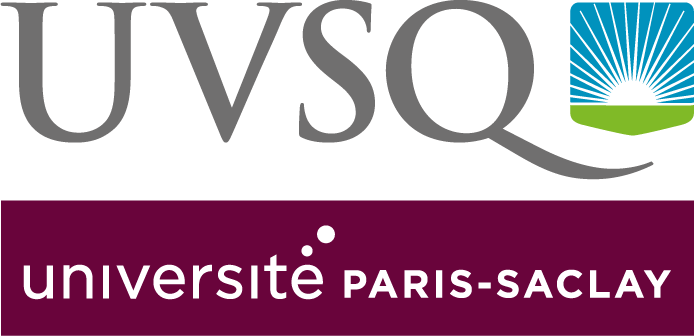Vous êtes ici : UVSQ RechercheHabilitation à diriger des recherches
- Partager cette page :
- Version PDF
"Interactions hôtes – pathogènes " par Fabienne MISGUICH
le 30 novembre 2020
Le lundi 30 Novembre 2020 à 14h 00
2 avenue de la source de la Bièvre
78180 Montigny-le-Bretonneux
Lien pour la visioconférence :
Participer à la réunion Zoom
https://uvsq-fr.zoom.us/j/97880788746?pwd=aG5Hc3UydWt0VUUwZS9pWlBhWWZEUT09
ID de réunion : 978 8078 8746
Code secret : 826998
Discipline : Microbiologie
Les agents pathogènes ont développé des stratégies sophistiquées pour infecter, se propager et persister au sein de leurs hôtes. L’ensemble de ma carrière
s’est orientée vers l’étude des interactions hôtes-pathogènes au niveau moléculaire, cellulaire voire au niveau de l'organisme entier dans le but d'identifier de
nouvelles cibles pour le diagnostic, la vaccination et le traitement. J’ai eu l’opportunité d’étudier 3 modèles différents : les infections par les coccidies aviaires,
l’amibiase intestinale humaine et enfin les infections humaines par des mycobactéries opportunistes.
L'intestin des poulets est sujet au parasitisme par des Eimeria, coccidie au développement intracellulaire et entraîne une entérite qui altère les performances
des animaux et qui peut être mortelle. J’ai produit des candidats vaccins et développé des formules adjuvantes (ISCOMs) orientée vers la vaccination orale
chez le Poulet et réalisé des essais de vaccination partiellement protecteurs. J’ai aussi développé de nouveaux outils absents chez le Poulet, notamment une
banque d’anticorps recombinants de Poulet (ScFv) produits en phage, afin de relancer un crible à plus grande échelle des antigènes les plus
immunoprotecteurs vis-à-vis de cette parasitose.
L’amibiase humaine est une parasitose intrigante dans le sens où le parasite se comporte dans la majorité des cas comme un commensal mais le parasite
peut devenir pathogénique provoquant des abcès intestinaux ou hépatiques pouvant conduire à la mort. Les évènements qui caractérisent la progression de
l’amibiase invasive sont seulement en partie connus par l’absence de modèle animal permettant de reproduire une infection intestinale. Mon objectif a été de
développer un modèle porcin d’amibiase intestinale s’appuyant sur la proximité́ phylogénétique de ces animaux avec l’homme, la robustesse de ce modèle
animal pour étudier d’autres pathologies humaines, la connaissance de leur génome, la mise à disposition de nombreux phénotypes et la possibilité́ de
manipuler la flore intestinale de ces animaux.
La mucoviscidose est une maladie génétique mortelle. Le dysfonctionnement de la protéine CFTR entraîne une accumulation de sécrétions visqueuses
épaisses, conduisant à une obstruction des voies respiratoires et une inflammation. Cela transforme l'environnement pulmonaire en un environnement
favorable à l'accumulation et à la prolifération d'agents pathogènes, dont Mycobacterium abscessus, véritable mycobactérie opportuniste. J’ai encadré des
doctorant·ess qui ont mis en évidence certains facteurs responsables de ces mécanismes de la persistance de M. abscessus dans les cellules, notamment
le système de sécrétion mycobactérien de type VII ESX-4 et ses substrats. Les causes de la susceptibilité particulière des patients atteints de mucoviscidose
à l’infection par rapport aux patients en bonne santé ne sont pas vraiment connues. Nous avons développé un modèle de mouches de type mucoviscidose
pour identifier, parmi les facteurs de l'hôte impliqués dans la réponse innée contre l'infection à M. abscessus, des candidats qui, lorsque leur expression est
modulée, permettent aux mycobactéries de se maintenir de façon chronique chez ces patients.
Abstract:
Pathogens have developed sophisticated strategies to infect, spread and persist within their hosts. My career has been oriented towards the study of hostpathogen
interactions at the molecular, cellular and even whole-organism level in order to identify new targets for diagnosis, vaccination and treatment. I have
had the opportunity to study 3 different models: infections by avian coccidia, human intestinal amoebiasis and finally human infections by opportunistic
mycobacteria.
Chicken intestines are subject to parasitism by Eimeria, a coccidia with intracellular development and leads to enteritis which alters the performance of the
animals and can be fatal. I have produced candidate vaccines and developed adjuvant formulations (ISCOMs) oriented towards oral vaccination in chickens
and carried out partially protective vaccination trials. I have also developed new tools not available in Chicken, notably a bank of recombinant chicken
antibodies (ScFv) produced in phage, in order to screen the most immunoprotective antigens against this parasitosis.
Human amoebiasis is an intriguing parasitosis in the sense that the parasite behaves in the majority of cases like a commensal but the parasite can become
pathogenic causing intestinal or liver abscesses that can lead to death. The events that characterize the progression of invasive amoebiasis are only partially
known due to the lack of an animal model to reproduce an intestinal infection. My objective was to develop a porcine model of intestinal amoebiasis based
on the phylogenetic proximity of these animals with humans, the robustness of this animal model to study other human pathologies, the knowledge of their
genome, the availability of numerous phenotypes and the ability to manipulate the intestinal flora of these animals.
Cystic fibrosis is a fatal genetic disease. The dysfunction of the CFTR protein leads to an accumulation of thick viscous secretions, leading to airway obstruction
and inflammation. This turns the lung environment into an environment conducive to the accumulation and proliferation of pathogens, including Mycobacterium
abscessus, a true opportunistic mycobacterium. I have supervised PhD students who have highlighted factors responsible for these mechanisms of
M. abscessus persistence in cells, notably the mycobacterial type VII ESX-4 secretion system and its substrates. The causes of the particular susceptibility
of cystic fibrosis patients to infection compared to healthy patients are not really known. We have recently developed a cystic fibrosis fly model to identify,
among the host factors involved in the innate response to M. abscessus infection, candidates which, when their expression is modulated, allow mycobacteria
to persist chronically in these patients
Mme Hélène BIERNE, DR INRAE Jouy-en-Josas, Équipe Epigénétique et Microbiologie Cellulaire (Rapporteure)
Mme Stéphanie BURY-MONÉ, PU, Université Paris-Saclay, Équipe Microbiologie moléculaire des Actinomycètes (Rapporteure)
Mme Anne SILVESTRE, CR INRAE Nouzilly, UMR Infectiologie et santé publique (Rapporteure)
Mme Caroline DEMANGEL, Chef de groupe Immunobiologie de l’infection, Institut Pasteur (Examinatrice)
M. Jean-Louis HERRMANN, PU-PH, Université de Versailles-Saint-Quentin-en-Yvelines, U1173 (Examinateur et Président du Jury)
Documents à télécharger
- Avis d'affichage HDR - Fabienne MISGUICH.pdf PDF, 105 Ko










 Etudiants
Etudiants